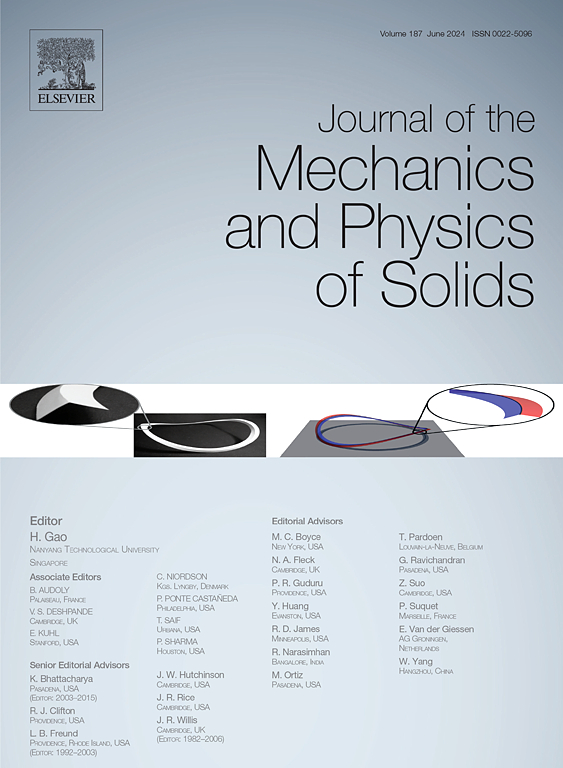超弹性纳米柱的双峰标度规律与尺寸效应
IF 5
2区 工程技术
Q2 MATERIALS SCIENCE, MULTIDISCIPLINARY
引用次数: 0
摘要
形状记忆合金可以变形,然后弹回原来的形状,在医疗领域得到了广泛的应用,从心脏瓣膜到支架。随着我们不断突破技术的界限,为精细的手术治疗创造更小、更精确的工具,这些合金在微小尺度上的行为变得越来越重要。在本研究中,我们发现应力诱导相变所需的临界应力尺寸效应并不普遍。我们提出了一个与取向相关的功率衰减定律,表明在名义上的软[001]和硬[111]取向下,小于1微米的矿柱的临界应力有特定的增加。此外,通过200 nm尺度的晶格挫折,我们观察到高应力(2 GPa)下具有11%可恢复应变的高可变形性。本研究为探索纳米器件形状记忆合金优越的弹性性能开辟了新的途径。本文章由计算机程序翻译,如有差异,请以英文原文为准。
Bimodal scaling law and size effect in superelastic nanopillars
Shape memory alloys that can deform and then spring back to their original shape, have found a wide range of applications in the medical field, from heart valves to stents. As we push the boundaries of technology creating smaller, more precise tools for delicate surgery treatments, the behavior of these alloys at tiny scales becomes increasingly crucial. In this study, we discover that the size effect of critical stress required for stress-induced phase transformation is not universal. We propose an orientation-dependent power decay law, indicating a specific increase in critical stress for pillars smaller than 1 micrometer for the nominally soft [001] and hard [111] orientations. Additionally, we observe high transformability with 11% recoverable strain under high stress (2 GPa) through lattice frustration at 200 nm scale. This research opens new avenues for exploring the superior elastic behavior of shape memory alloys for nanodevices.
求助全文
通过发布文献求助,成功后即可免费获取论文全文。
去求助
来源期刊
CiteScore
9.80
自引率
9.40%
发文量
276
审稿时长
52 days
期刊介绍:
The aim of Journal of The Mechanics and Physics of Solids is to publish research of the highest quality and of lasting significance on the mechanics of solids. The scope is broad, from fundamental concepts in mechanics to the analysis of novel phenomena and applications. Solids are interpreted broadly to include both hard and soft materials as well as natural and synthetic structures. The approach can be theoretical, experimental or computational.This research activity sits within engineering science and the allied areas of applied mathematics, materials science, bio-mechanics, applied physics, and geophysics.
The Journal was founded in 1952 by Rodney Hill, who was its Editor-in-Chief until 1968. The topics of interest to the Journal evolve with developments in the subject but its basic ethos remains the same: to publish research of the highest quality relating to the mechanics of solids. Thus, emphasis is placed on the development of fundamental concepts of mechanics and novel applications of these concepts based on theoretical, experimental or computational approaches, drawing upon the various branches of engineering science and the allied areas within applied mathematics, materials science, structural engineering, applied physics, and geophysics.
The main purpose of the Journal is to foster scientific understanding of the processes of deformation and mechanical failure of all solid materials, both technological and natural, and the connections between these processes and their underlying physical mechanisms. In this sense, the content of the Journal should reflect the current state of the discipline in analysis, experimental observation, and numerical simulation. In the interest of achieving this goal, authors are encouraged to consider the significance of their contributions for the field of mechanics and the implications of their results, in addition to describing the details of their work.

 求助内容:
求助内容: 应助结果提醒方式:
应助结果提醒方式:


